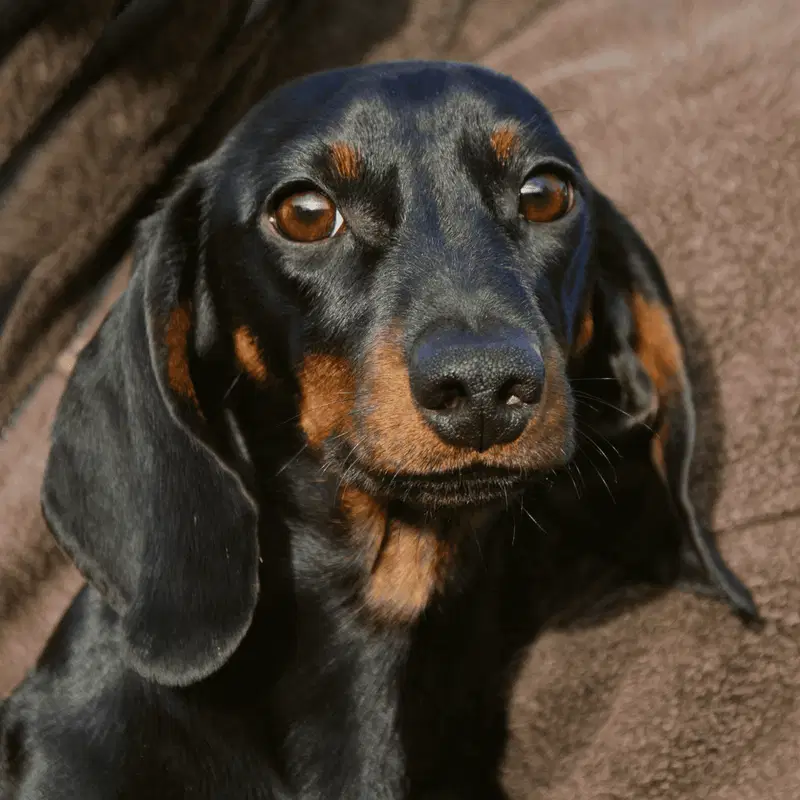
Dachshund
Shortcuts
Dachshunds stand out with their unique long bodies and short legs. They are available in standard and miniature sizes, with smooth, wire-haired, and long-haired coats with distinct appeal. Their bold, lively personalities display unexpected tenacity rooted in their hunting origins, making them spirited yet occasionally stubborn companions.
Though not cut out for distance running or heavy swimming, Dachshunds are energetic and enjoy engaging in playful activities. Their strong protective instincts and deep barks make them excellent watchdogs, while their independent nature is balanced by deep affection, endearing them to dog lovers globally.
Breed Overview

Height
8–9 inches (standard); 5–6 inches (miniature)
Weight
16 – 32 pounds (standard); under 11 pounds (miniature)
Lifespan
12 – 16 years
Colors
Black & Tan, Chocolate & Tan, Cream, Wheaten, Wild Boar, Red, Blue & Tan, Fawn (Isabella) & Tan, Black & Cream, Black, Chocolate, Fawn (Isabella) & Cream, Chocolate & Cream, Blue & Cream, Fawn
Suitable for
Families with older children
Temperament
Loyal, playful, curious


Height
8–9 inches (standard); 5–6 inches (miniature)
Weight
16 – 32 pounds (standard); under 11 pounds (miniature)
Lifespan
12 – 16 years
Colors
Black & Tan, Chocolate & Tan, Cream, Wheaten, Wild Boar, Red, Blue & Tan, Fawn (Isabella) & Tan, Black & Cream, Black, Chocolate, Fawn (Isabella) & Cream, Chocolate & Cream, Blue & Cream, Fawn
Suitable for
Families with older children
Temperament
Loyal, playful, curious

Dachshunds, often called “wiener dogs,” are a small breed known for their long bodies and short legs. Originating from Germany, they were used for hunting badgers. They come in three coat types: smooth, long-haired, and wire-haired.
Characteristics
Energy

Health

Sociability

Trainability

Lifespan


Enjoying this read?
We publish this content for free to generate interest in our Premium members' area. By subscribing, you can ask the writer any questions related to pet care and this article, get access to 100+ Premium Pet Care Guides and go Ad-Free with DogFix Premium for $2.99.
Health Conditions
Dachshunds typically live 12 to 16 years. To keep them healthy, provide a balanced diet and regular exercise. Watch for spinal issues due to their long backs and prevent obesity. Keep their ears clean to avoid infections and seek vet help if needed.
Minor Conditions
- Ear infections
- Vision problems
- Hearing problems
Serious Conditions
- Intervertebral Disc Disease (IVDD)
- Patellar Luxation
- Brittle Bone Disease

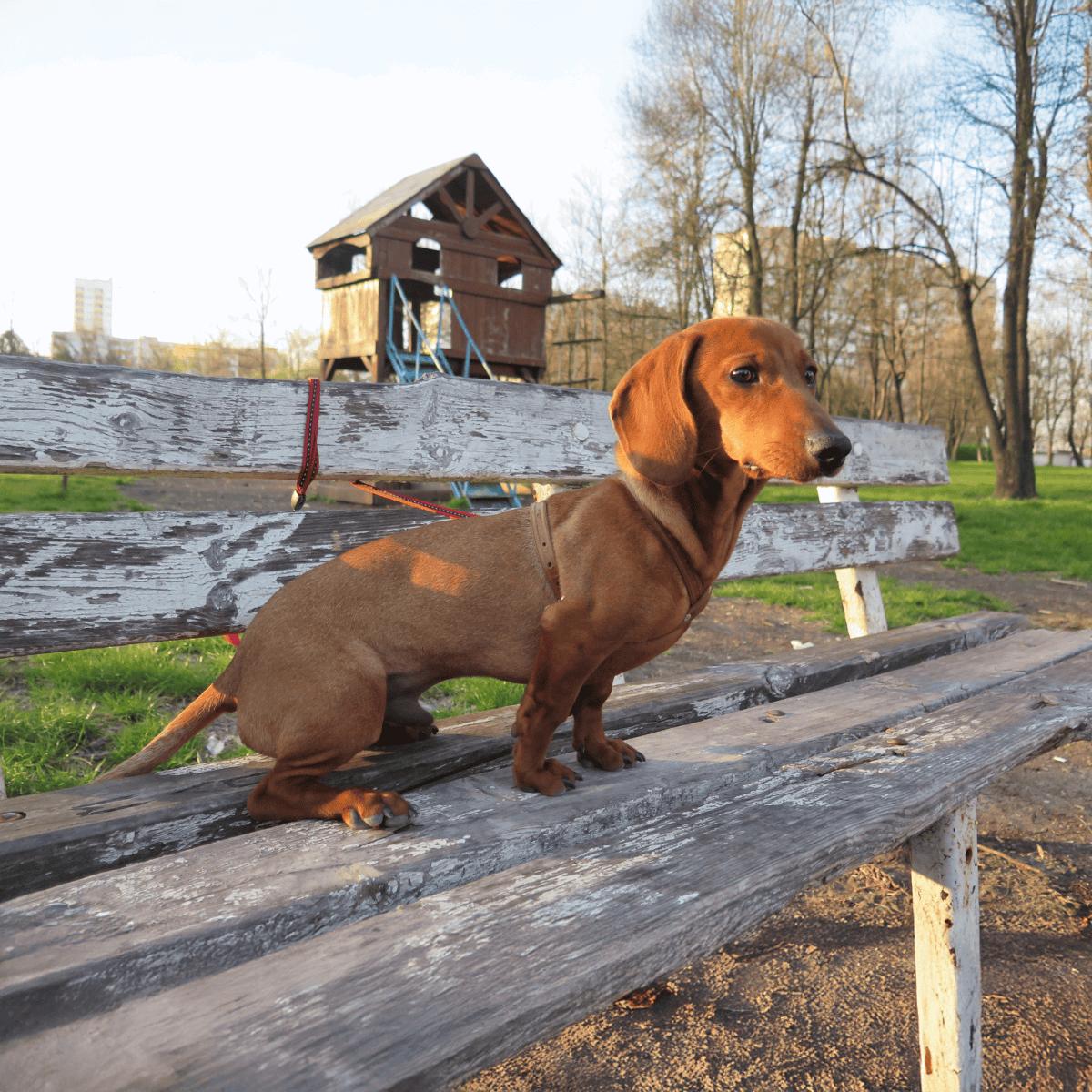
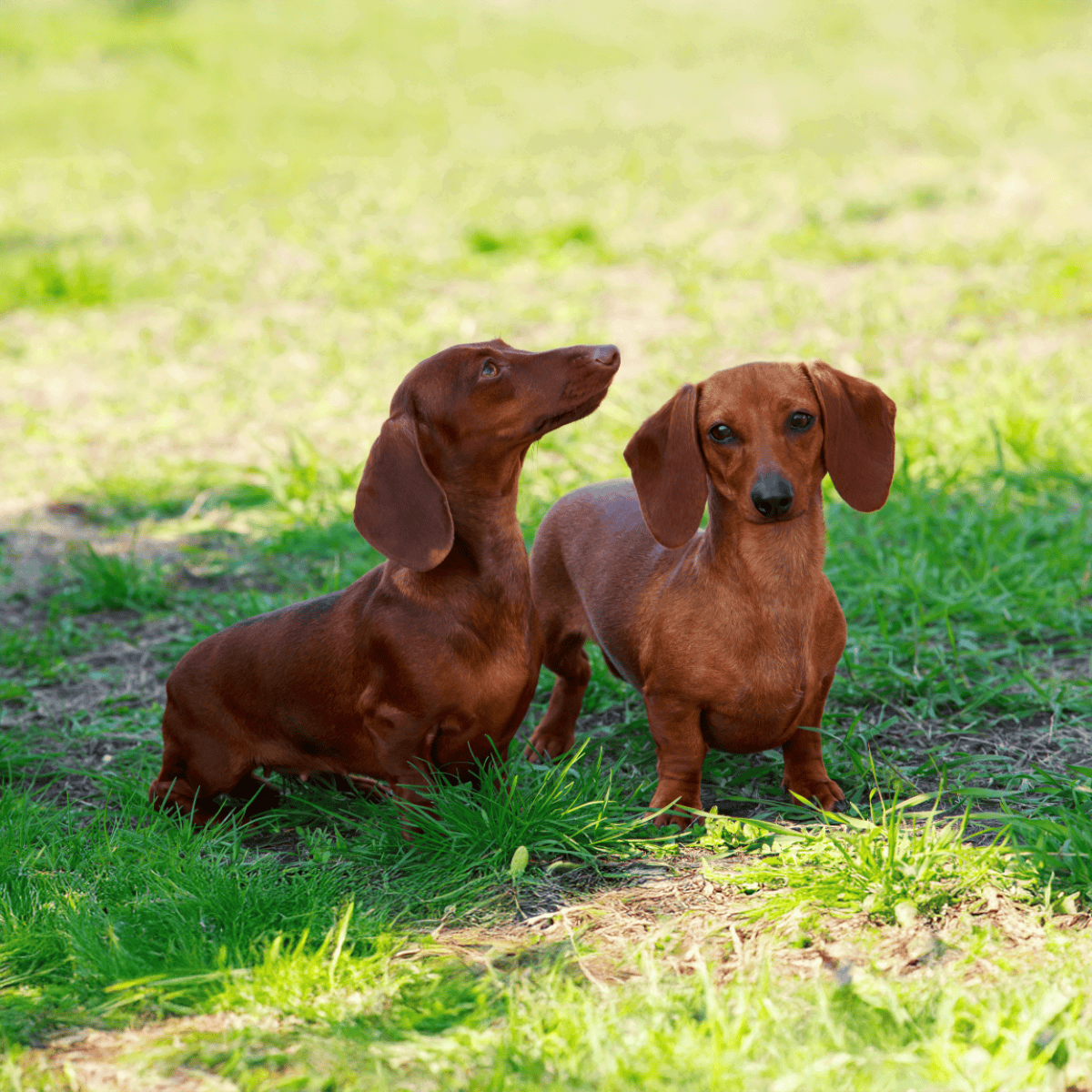
Dachshund Puppies
Dachshund puppies are adorable and make a great addition to families. They are known for their playful behavior and distinct long-bodied, short-legged appearance. Adoption can be challenging; they’re rare in rescues, leading many to adopt older dogs. Purchasing from reputable breeders is another avenue, offering the advantage of health-tested puppies to avoid genetic issues.
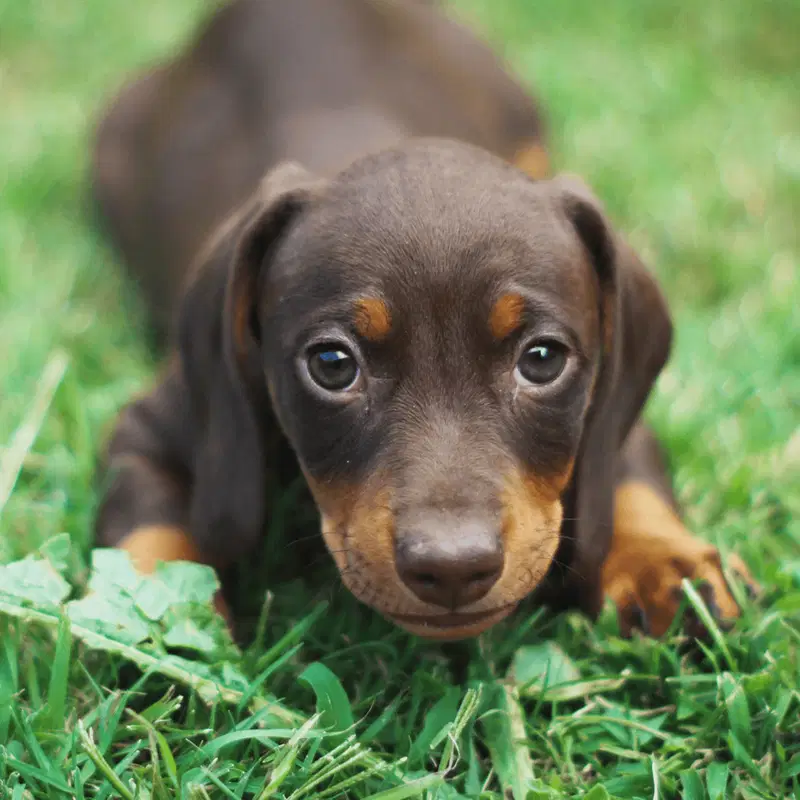
Buying a Dachshund from a breeder may be expensive, but it ensures initial health screenings and vaccinations, potentially reducing first-year veterinary costs. In contrast, shelter dogs may have less medical history, necessitating an emergency fund for unforeseen health issues. Puppies from breeders often receive basic training, simplifying their integration into new homes, whereas shelter puppies might need more extensive training and socialization efforts.
Temperament & Intelligence Of The Dachshund
Dachshunds are lively and playful, always ready to chase moving objects. Their high prey drive is evident in games like fetch. However, given their breeding to hunt independently, they are stubborn and do not always heed human commands. This intelligence and instinct-driven behavior demand patience from their owners.
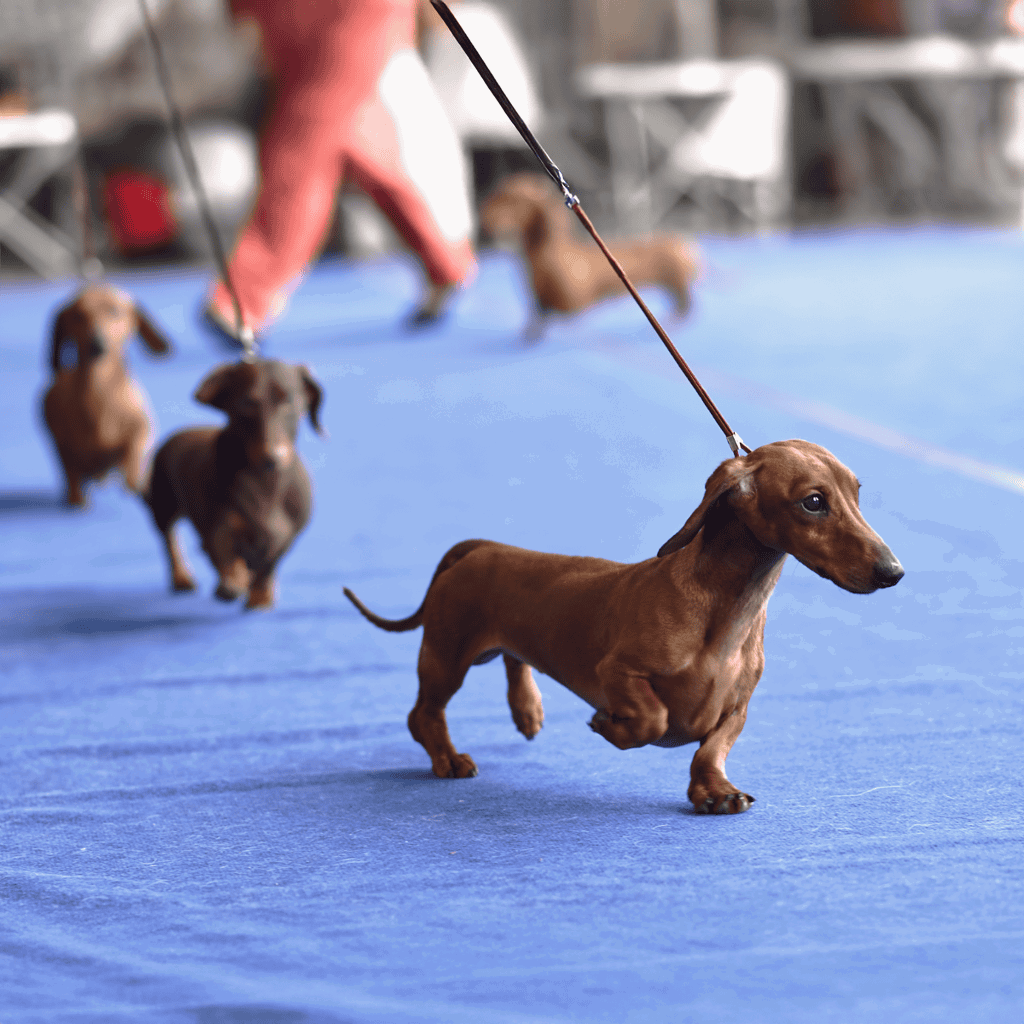
These dogs possess varied temperaments, from being vocal and protective to showing aloofness toward strangers. Early socialization and consistent training are essential despite the challenges in house training due to their size and stubborn strength. They’re devoted protectors, with their barking habits and protective nature stemming from their flushing dog lineage.
Are These Dogs Good For Families?
Dachshunds are a good choice for families, but their size and long back make them prone to injuries, especially from small children who might not handle them gently. Children must learn to treat these dogs respectfully, as Dachshunds may nip if they feel threatened or hurt.
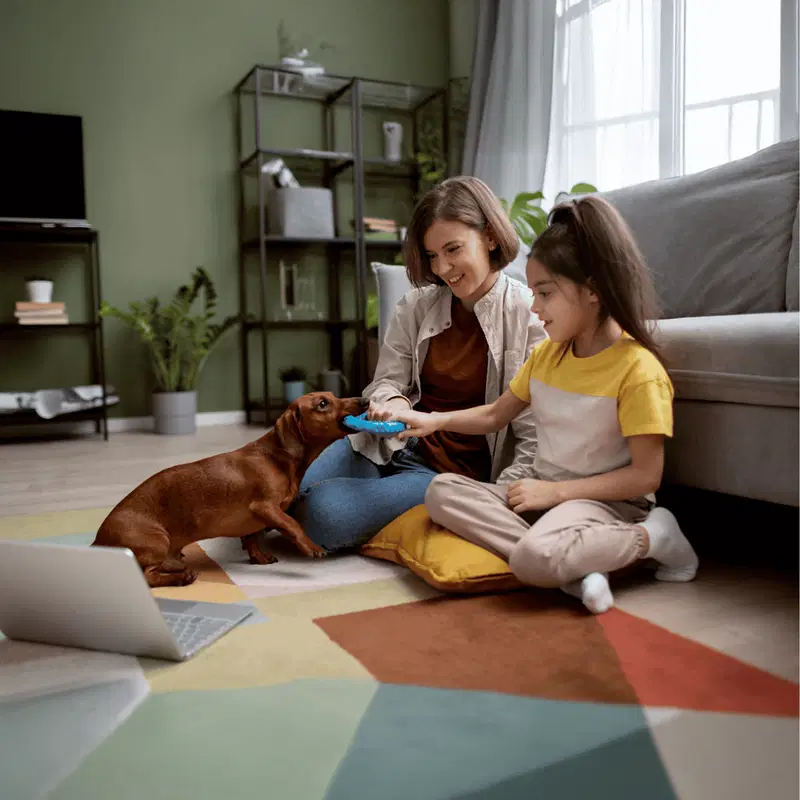
To foster good relations between dachshunds and other dogs, start socializing early, arrange playdates with various dogs, and use positive reinforcement to promote good behavior. Consistent and early socialization ensures that dachshunds can better integrate into households with multiple pets, particularly other dogs, making them more adaptable and less likely to engage in aggressive chasing behaviors.
Does This Breed Get Along With Other Pets?
With their instinctive prey drive, Dachshunds can find it challenging to coexist with small pets like cats and birds. They often chase them, accompanied by loud barking. This behavior can stress and startle even larger cats due to the dog’s intense pursuit despite their small size. They, however, usually have better relationships with other dogs, especially when socialized from a young age. Early socialization reduces their chance of seeing other dogs as threats, improving interactions.
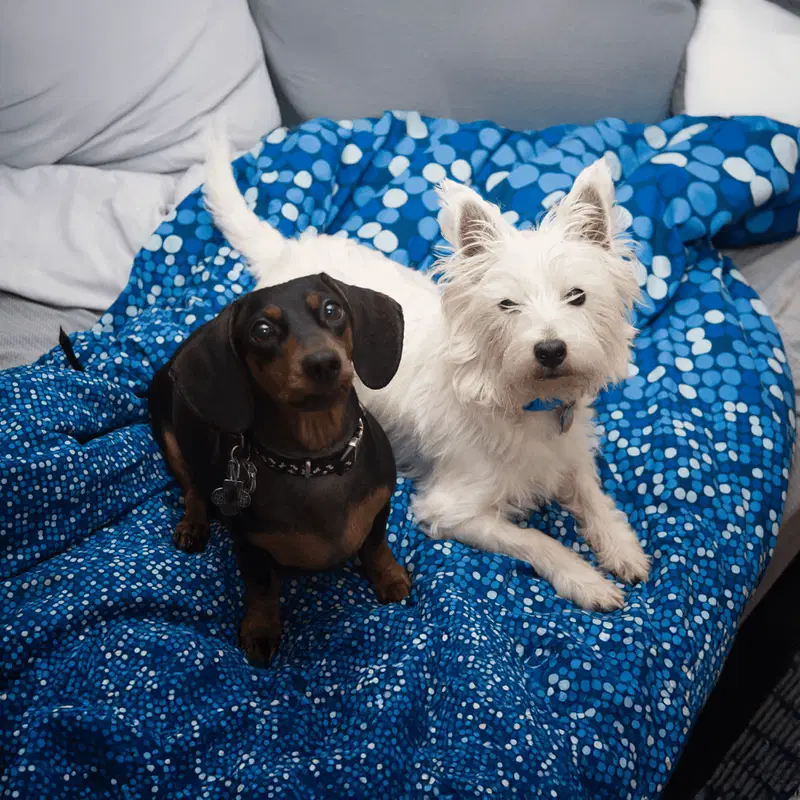
To foster good relations between dachshunds and other dogs, start socializing early, arrange playdates with various dogs, and use positive reinforcement to promote good behavior. Consistent and early socialization ensures that dachshunds can better integrate into households with multiple pets, particularly other dogs, making them more adaptable and less likely to engage in aggressive chasing behaviors.
Food & Diet Requirements
Dachshunds don’t require special diet plans and do well on high-quality commercial dog food. They strongly prefer meat, ideally as the main ingredient. Both whole meat and meat meals are recommended over meat by-products, which are usually lower quality. These dogs typically tolerate grains well, so opt for grain-inclusive food unless an allergy is present, as it adds nutritional benefits.
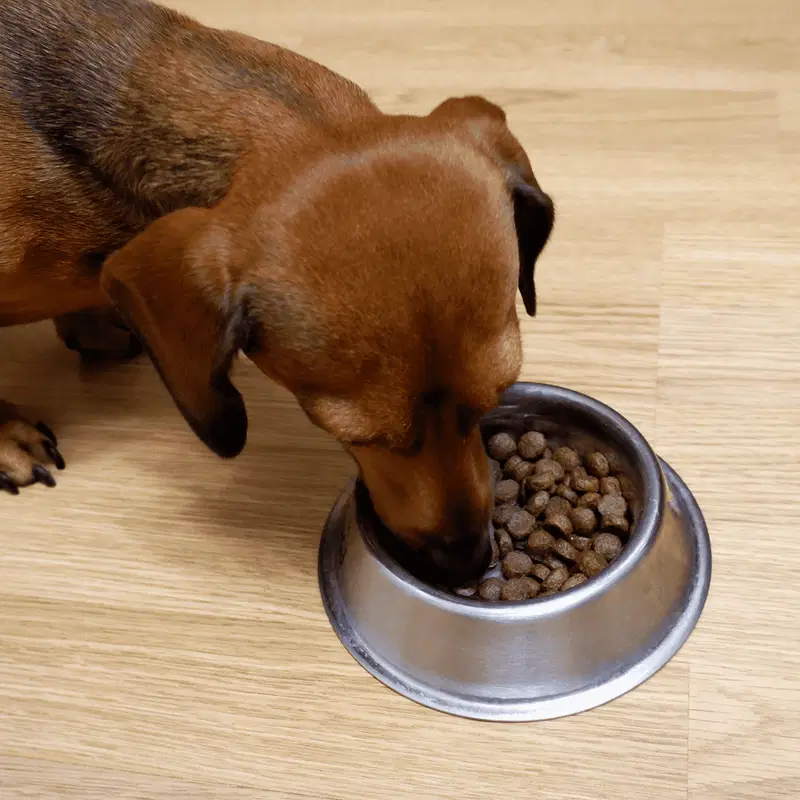
Regularly changing their food prevents boredom, reduces the chances of developing food allergies, and ensures a rich intake of various nutrients. This practice of varying their diet helps prevent nutritional deficiencies, making it a beneficial approach to overall health management.
Exercise
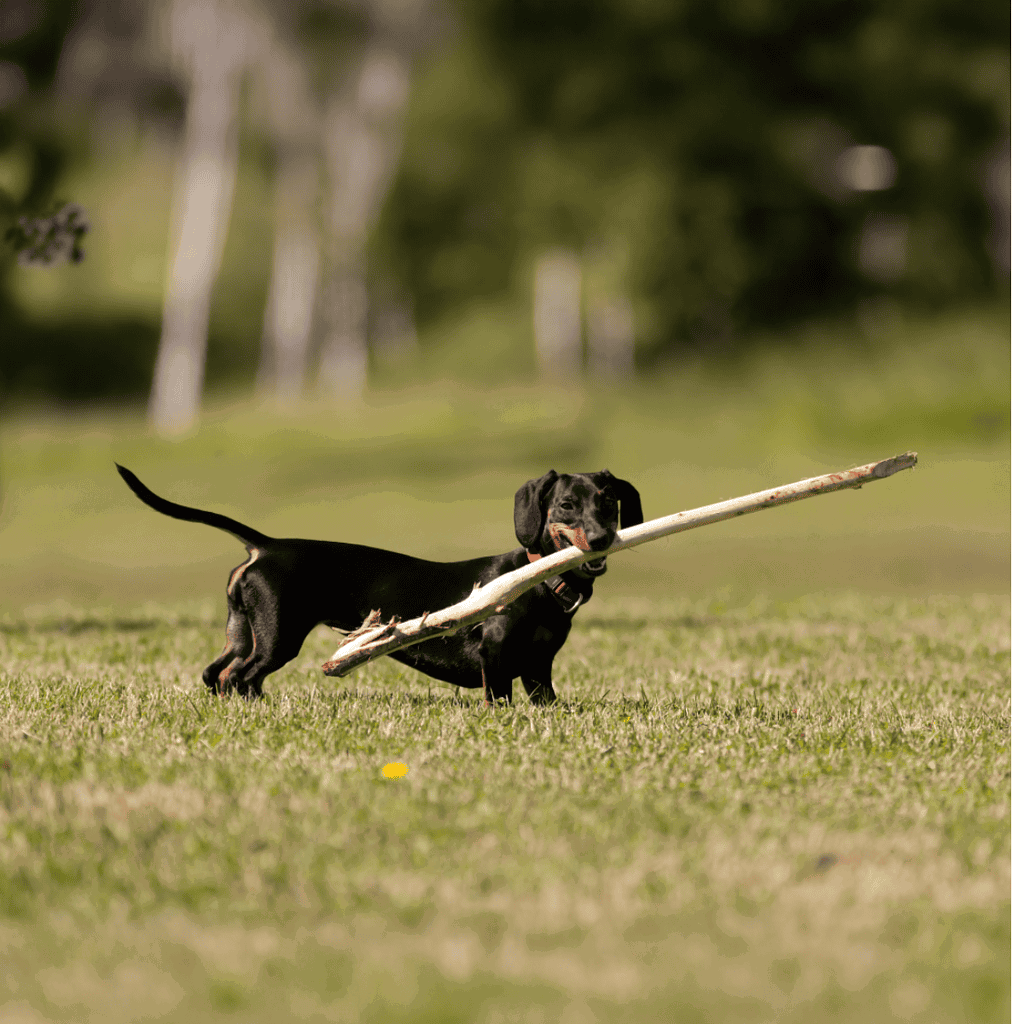
Despite their small size, dachshunds have significant exercise needs. They were initially bred for hunting, so an hour of daily activity is recommended. Short walks and play sessions help meet their exercise requirements. It is important to avoid activities that may strain their back, such as jumping or navigating uneven terrain. Playing fetch is particularly enjoyable for them. Simply throwing a ball in the backyard can fulfill their daily exercise needs. They also make great playmates for older children due to their love for chasing games. This makes engaging them in physical activity both fun and productive.
Training
Dachshunds, known for their stubborn streak, greatly benefit from early training, starting with basic commands like “sit” and “stay” to establish a good structure. Patience is essential, especially during housetraining, because of their small bladders, and consistent positive reinforcement yields better results.
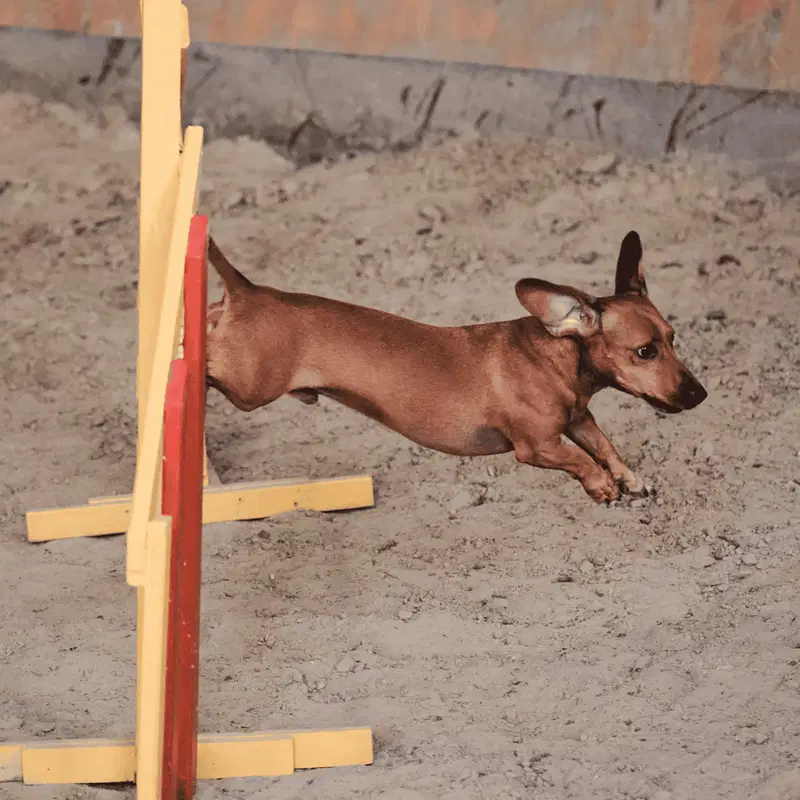
Socialization is crucial; puppy classes support command training and interaction, minimizing aggressive behavior. Positive exposure to varied environments and people from a young age encourages well-rounded behavior, where treats and praise motivate during sessions.
A balanced approach of firmness and kindness is most effective, avoiding harsh corrections that could backfire. Keeping training sessions short yet frequent helps maintain attention and reinforce learned behaviors, making for a more disciplined pet. Clear, calm commands are essential to keep the focus and facilitate learning.
Grooming
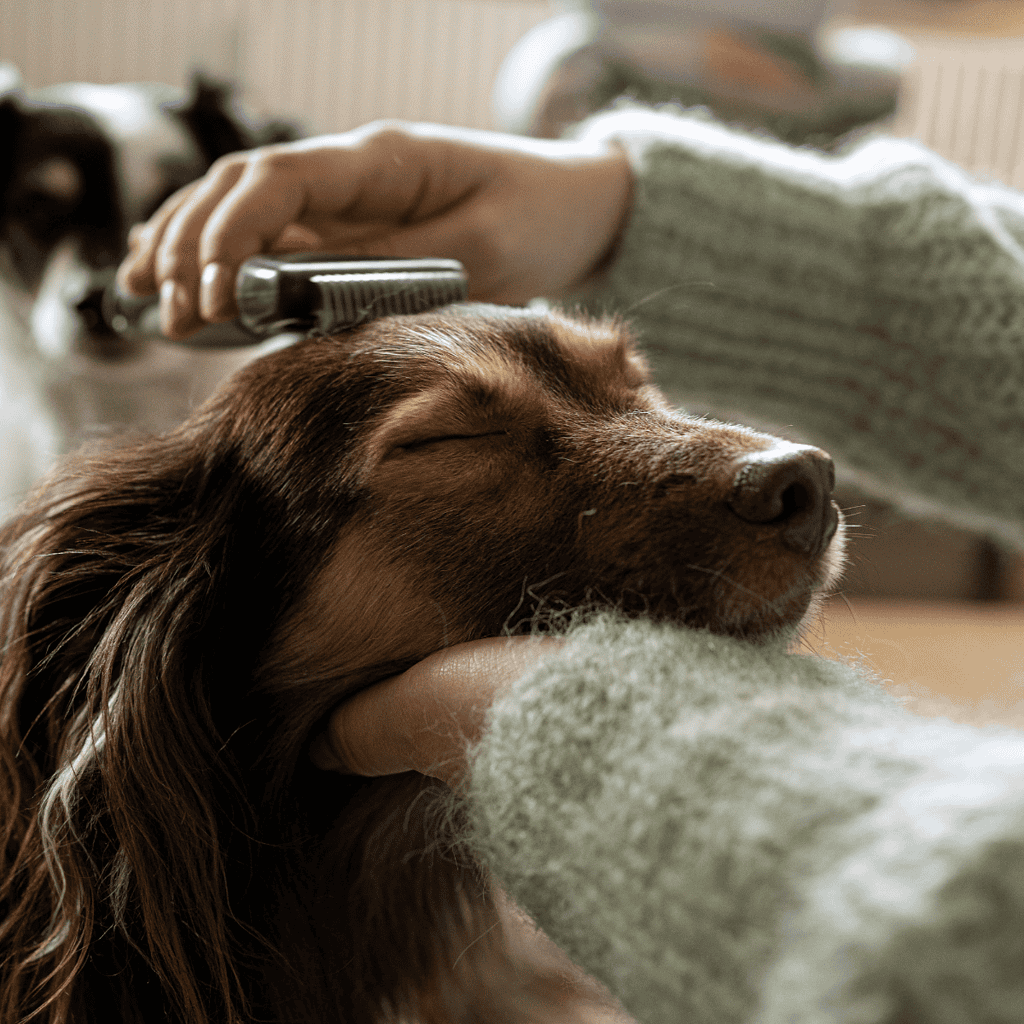
Proper care for a Dachshund depends on its fur type. Shorthaired varieties need weekly brushing, while long-haired ones require grooming multiple times weekly. It’s important to check and clean their ears regularly to avoid infections. Brushing their teeth and clipping their nails are essential for their overall health. Bathing should be done sparingly to prevent skin problems.
Male Vs. Female
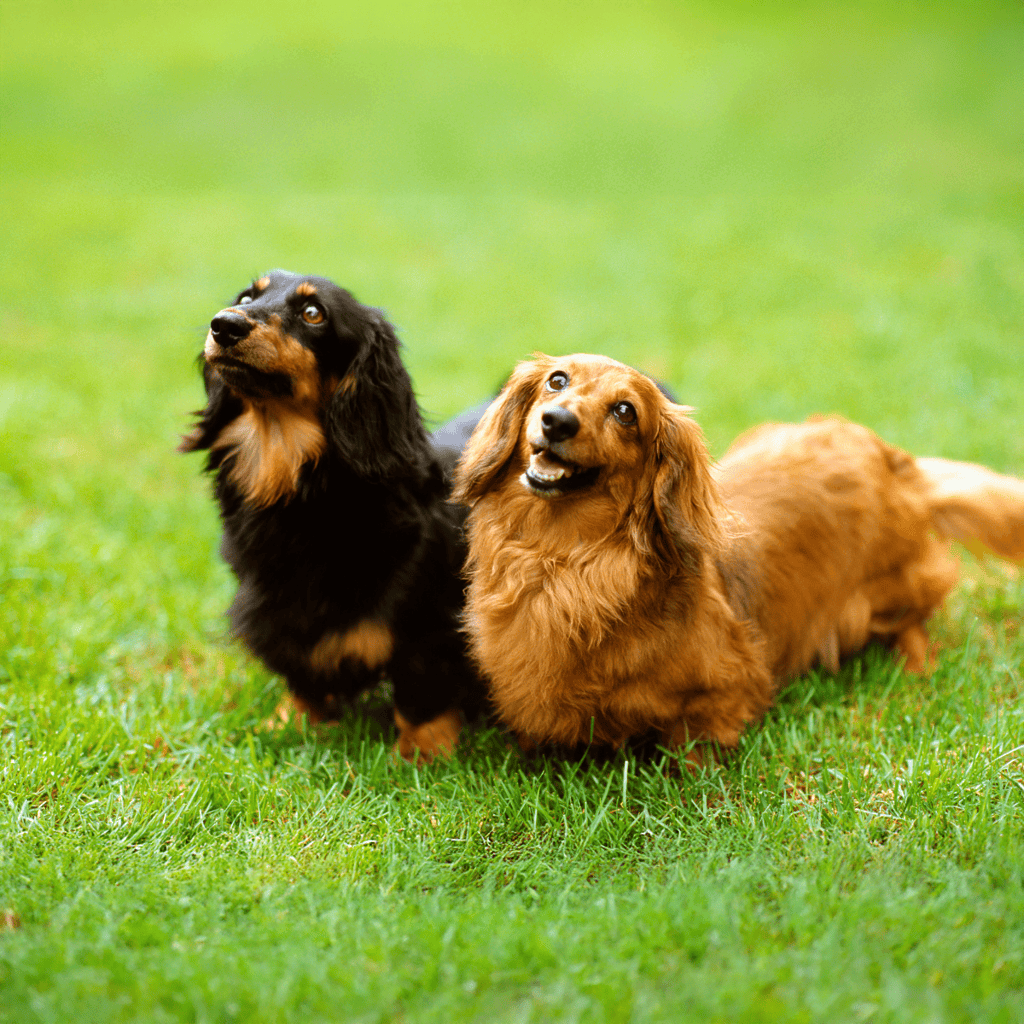
Male Dachshunds are typically slightly larger than females, but there are exceptions. There’s no noticeable difference in temperament between male and female Dachshunds. The choice between a male and female Dachshund often comes down to personal preference. Both genders make suitable pets for most families.
Fact #1: They Were Bred to Hunt Badgers
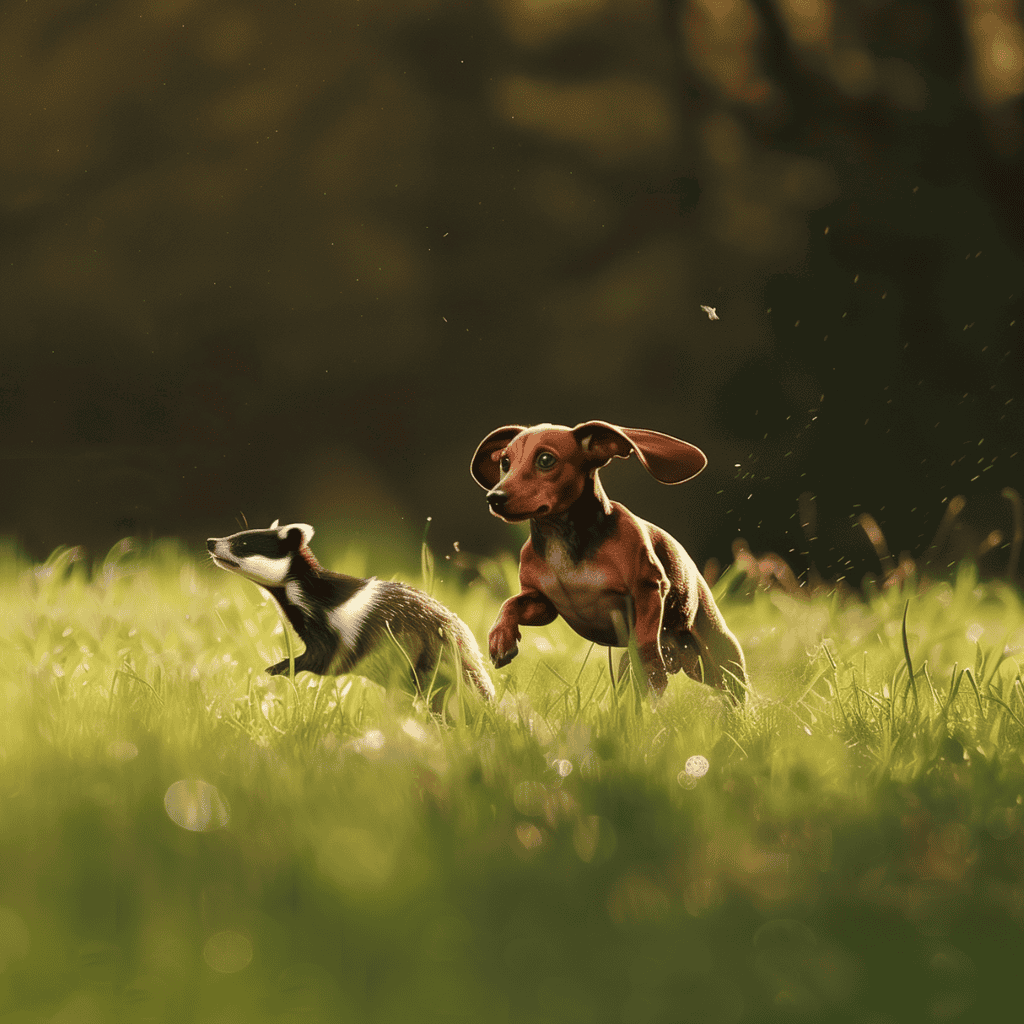
The Dachshund, whose name translates from German to “badger dog,” was specifically developed to track and hunt badgers. Its short legs keep it low to the ground, helping it follow scents closely, while its narrow bodies enable it to crawl into burrows. Despite its small stature, Dachshunds are known for their courage and tenacity, displaying bravery when chasing prey. Over time, different varieties of Dachshunds were bred to hunt various types of prey, but their original purpose remains rooted in badger hunting.
Fact #2: They Have Three Different Types of Coats
Dachshunds are classified based on smooth, wire-haired, and long-haired coat types. Smooth coats are sleek and require minimal grooming. Wire-haired Dachshunds feature a dense outer coat and softer undercoat and require regular grooming.

Long-haired Dachshunds have silky, slightly wavy coats that feather around their extremities, needing more grooming to prevent tangles. Each coat type, from sleek and shiny to rough and dense, has specific grooming needs to maintain health and appearance.
Fact #3: A Dachshund Was the First Olympic Mascot
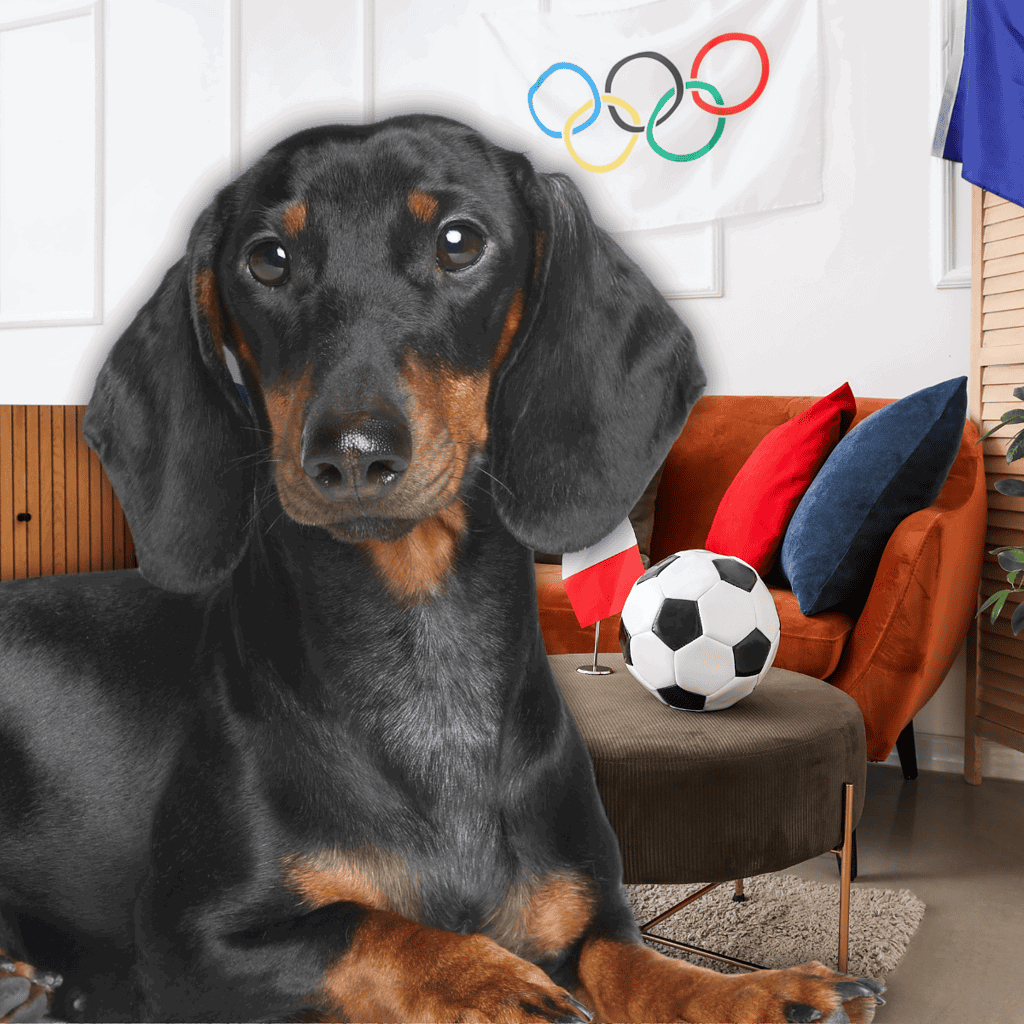
The Munich Olympic Games proudly unveiled their inaugural official mascot in 1972—the delightful Dachshund known as Waldi. Waldi’s spirit symbolizes endurance and agility, and the marathon route, cleverly shaped like a Dachshund to honor this remarkable mascot, was inspired by this.
Final Thoughts
Dachshunds are fantastic companions for families with older children because of their playful and loyal demeanor. Their love for chasing balls brings endless joy. However, their instinct to chase means being mindful around smaller pets like cats is important.
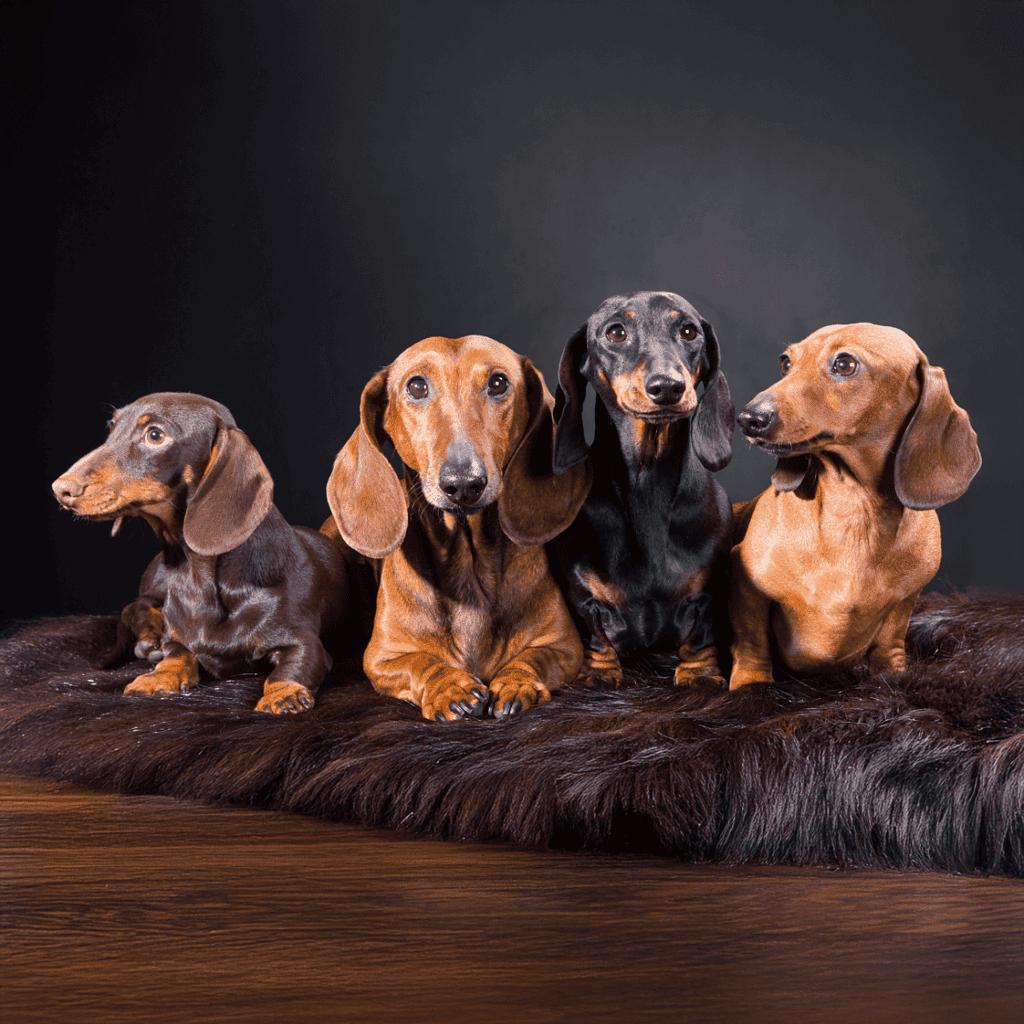
With roots in hound lineage, Dachshunds have a remarkable sense of smell, which guides them into exciting adventures through scent trails. Despite their small size, they showcase the determination and curiosity of larger hounds, so it’s wise to use a leash during walks. Overall, Dachshunds bring much love, entertainment, and an adventurous spirit to any family.
Frequently Asked Questions
What is the average weight range for a Dachshund?
Dachshunds usually weigh between 16 to 32 pounds for a standard size. Miniature Dachshunds typically weigh 11 pounds or less.
What personality traits are typically seen in Dachshunds?
Dachshunds are known for their bold and curious nature. They are loyal, often forming strong bonds with their families. However, they can also be a bit stubborn and independent.
How long do Dachshunds generally live?
The average lifespan for a Dachshund is around 12 to 16 years. With proper care, some can even live into their late teens.
What are the standard size dimensions of a Dachshund?
Standard Dachshunds stand about 8 to 9 inches tall at the shoulder, while miniatures are usually 5 to 6 inches tall.
What variety of colors do Dachshunds come in?
Dachshunds come in various colors, including red, cream, black and tan, chocolate, and dapple. They can also have different patterns and markings.
How often do Dachshunds require grooming?
Their grooming needs depend on their coat type. Smooth-coated Dachshunds require minimal grooming, while long-haired varieties need regular brushing. Wire-haired Dachshunds also require periodic hand-stripping.

Didn’t find what you need? Use the search!
Search our database of over hundreds of posts with up-to-date information from our experts and veterinarians.

